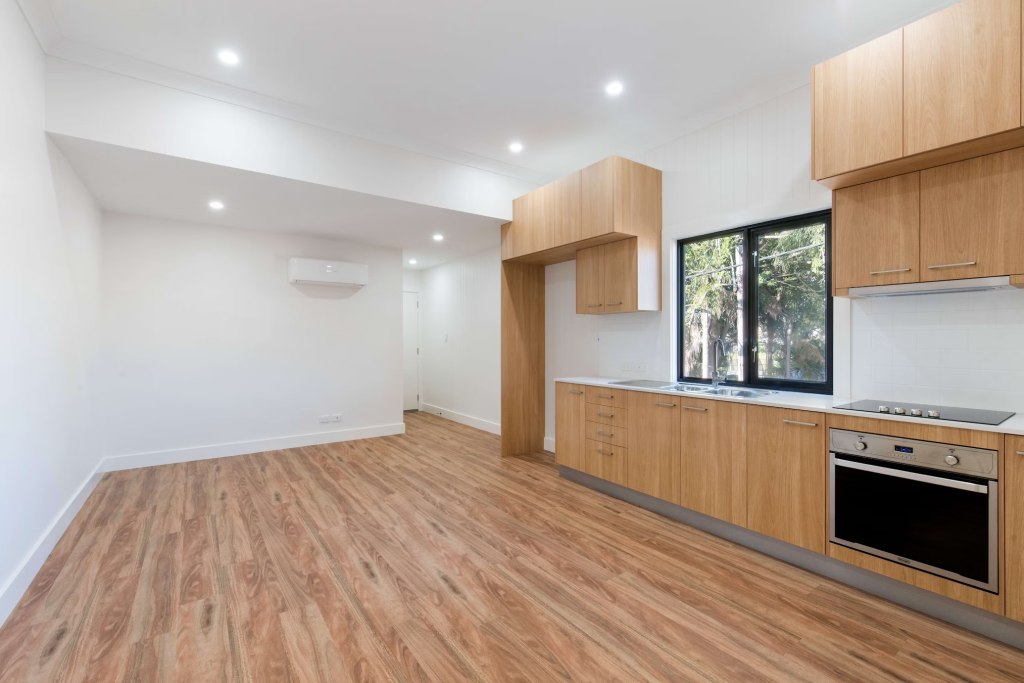An open floor plan has become one of the most sought-after features in modern homes, offices, and other types of commercial spaces. With its wide, unbroken spaces and minimal walls or partitions, it promotes a sense of openness and flexibility that many people find attractive.

The purpose of an open floor plan can vary depending on the specific context—whether it’s for residential, office, or retail environments—but generally, it’s about enhancing functionality, improving communication, and creating an atmosphere of spaciousness.
In this article, we’ll delve into the multiple reasons why open floor plans have gained so much popularity, explore the benefits they provide, and touch on some considerations that should be kept in mind when opting for such a layout.
The Purpose Of An Open Floor Plan
Improved Social Interaction
One of the most prominent purposes of an open floor plan is fostering improved social interaction. In traditional layouts with segmented rooms, people often feel isolated from one another. For example, a person working in a kitchen with walls separating it from the living area or dining room may miss out on conversations happening elsewhere in the house. An open floor plan removes these physical barriers, encouraging communication and making it easier for people to connect.
This is particularly beneficial in homes where families or housemates are looking for a layout that promotes togetherness. In the workplace, open office layouts also aim to increase collaboration. By eliminating walls and cubicles, employees are more likely to engage with each other, share ideas, and discuss projects, fostering a sense of teamwork. In Australian offices, this trend has been reinforced by the focus on agile work environments, where flexibility and communication are key.
Enhanced Natural Light And Ventilation
Another primary advantage of open floor plans is the ability to harness natural light and improve ventilation. Traditional rooms, especially in older homes, often have smaller windows due to the presence of walls and partitions. This can lead to dark, cramped spaces that may feel closed off or unwelcoming.
In an open floor plan, large, unobstructed spaces allow sunlight to flood the interior, brightening up the entire living area or workspace. In turn, this reduces the need for artificial lighting during the day, helping to save on energy costs. The enhanced light also contributes to the psychological benefits of having a bright, airy environment that can increase productivity and overall well-being.
Along with better natural light, an open layout allows for improved airflow throughout the space. With fewer walls, air can circulate more freely, potentially making the environment more comfortable, especially in warmer climates like those found in many parts of Australia. Cross-ventilation becomes easier to achieve, helping to regulate indoor temperatures without the reliance on air conditioning or other mechanical systems.
A Sense Of Space And Expansiveness
One of the most important aspects of an open floor plan is the visual and psychological sense of space it creates. Removing interior walls and partitions can make an area feel much larger and more expansive. This is especially beneficial in homes or buildings that are on the smaller side, as it prevents the space from feeling cramped or boxed in.
In both residential and commercial environments, people tend to gravitate toward open spaces because they create a sense of freedom and flexibility. For instance, in a home, the lack of walls between the kitchen, dining, and living areas can create a continuous flow, making the space feel airy and much larger than it may actually be. This is particularly important in urban areas where space is often limited and expensive.
Increased Flexibility And Versatility
Another major benefit of an open floor plan is the increased flexibility it offers in terms of how the space can be used. Since there are fewer physical barriers, residents or workers have more freedom to organise and repurpose areas based on changing needs.For example, in a home, an open kitchen and living room can easily transition between a casual family area, an entertaining space for guests, or a spot for quiet relaxation. This versatility is a key advantage, especially in modern lifestyles where flexibility and multifunctional spaces are highly valued.
In office environments, open floor plans allow organisations to adjust the layout more easily, accommodating different teams, work styles, and even growth. As companies evolve, the ability to reconfigure spaces without structural changes is a major advantage. This adaptability is particularly important in dynamic industries, where teams may need to shift frequently between collaborative workspaces and quiet, individual areas.
Promoting Family And Group Cohesion
In residential spaces, an open floor plan can promote a sense of family cohesion. Traditionally, the design of homes often isolated family members in separate rooms—parents in the living room, children in their bedrooms, and so on. This lack of interaction could sometimes lead to families feeling disconnected from each other.
With an open layout, families can more easily spend time together while still performing different activities. Parents may cook in the kitchen while keeping an eye on children doing homework in the dining area or watching TV in the living room.
The open space facilitates a shared environment that encourages communication and strengthens bonds.The open layout also makes it easier for people to host gatherings or entertain friends and family. Without walls dividing the space, guests can mingle and move freely throughout the area, creating a more social and interactive atmosphere.
Aesthetic Appeal And Modern Design
Open floor plans are often associated with contemporary aesthetics, and many people choose them because they align with modern design principles. The minimalist approach, with clean lines and spacious interiors, provides a sleek and stylish atmosphere. This aesthetic can also increase the perceived value of a property, as potential buyers or renters often appreciate the open concept.
In Australian homes, the use of open floor plans is particularly common in newer builds, reflecting a trend towards simpler, more functional designs. For example, the kitchen and living room areas may seamlessly flow into one another, with modern finishes like stone countertops, glass doors, and large windows that connect the interior with the outdoors.
The open layout allows for creative interior design opportunities, offering more freedom to experiment with furniture arrangements, colours, and decor without the limitations posed by walls and rooms. The result is a cohesive, inviting space that feels visually appealing.
Facilitating Surveillance And Safety
While open floor plans are often touted for their aesthetic and social benefits, they can also provide safety and surveillance advantages. In both residential and commercial spaces, the lack of walls allows for easier supervision of children, elderly family members, or employees in certain environments.
For example, in a home with an open living area, parents can easily monitor children playing in the lounge while preparing dinner in the kitchen. Similarly, in a retail or hospitality setting, an open layout makes it easier for staff members to keep an eye on customers, ensuring both safety and security. This visibility is particularly important in public spaces where surveillance is necessary to prevent accidents or issues from going unnoticed.
Potential Drawbacks And Considerations
Despite the many advantages, there are also several considerations to keep in mind when opting for an open floor plan. While open layouts can create a sense of space and freedom, they can also present challenges in terms of noise and privacy.
- Noise: One of the most common criticisms of open floor plans is the lack of sound insulation. In a large, open area, noise from the kitchen, living room, or any other part of the space can travel easily, which can be disruptive. This can be particularly problematic in shared living spaces or busy offices, where background noise can affect focus and productivity. However, strategies such as the use of rugs, acoustic panels, and furniture arrangements can help mitigate this issue.
- Lack of Privacy: With fewer walls or partitions, individuals may feel a lack of privacy in certain situations. In homes with open layouts, this can be a concern for people who value personal space, particularly in large families or multi-generational households. In the workplace, employees might find it difficult to concentrate or hold private conversations in an open office space. To address these issues, some open plans include designated quiet zones or flexible partitions that can be moved or adjusted.
- Climate Control: Open spaces can also make it more challenging to control the temperature across different zones of a home or office. Without walls to separate rooms, air conditioning or heating systems may struggle to keep the entire area at a consistent temperature. This issue can be managed through efficient design choices, such as strategically placed vents, windows, and thermostats.
Conclusion
The purpose of an open floor plan is multifaceted, offering a wide range of benefits for different kinds of spaces, from homes to offices. The increased sense of space, improved social interaction, and flexibility are just a few reasons why these layouts have become so popular in modern design. Whether it’s encouraging collaboration in the workplace or facilitating family interaction at home, an open floor plan fosters connection and efficiency.
However, it’s important to consider both the advantages and potential challenges that come with such layouts, such as noise and privacy concerns. By carefully planning and incorporating thoughtful design elements, the benefits of an open floor plan can be maximised, creating spaces that are not only functional but also aesthetically pleasing and harmonious.
Frequently Ask Question
How Does An Open Floor Plan Affect Home Value?
An open floor plan can enhance the appeal of a home, especially for buyers who value modern, flexible living spaces. Homes with open layouts often feel larger and more connected, which can be a selling point. However, personal preferences vary, and some buyers may prefer traditional layouts with more separation. Ultimately, the impact on home value depends on the market and buyer expectations.
Are Open Floor Plans Energy-Efficient?
Open floor plans can be energy-efficient if designed properly. With fewer walls and more natural light, they can reduce the need for artificial lighting during the day. However, the open space can also make it harder to heat or cool evenly, potentially leading to higher energy costs. Using energy-efficient appliances, insulation, and smart design can help mitigate these challenges and make an open floor plan more sustainable.
How Can I Create Privacy In An Open Floor Plan?
While an open floor plan doesn’t offer natural privacy due to the lack of walls, there are several ways to create more defined spaces. Using furniture like bookshelves, curtains, or room dividers can help create physical barriers without closing off the flow. Additionally, varying floor levels, or incorporating elements like rugs and lighting, can help delineate zones and provide a sense of privacy. Creating distinct areas with different functions can also reduce the feeling of being in one large, uninterrupted space.
